UNDERACTIVE GLUTEAL MUSCLES AND BACK PAIN
People usually spend more than 9 hours a day sitting for work and when they get up from the desk they feel the ache in the low back or even knees. The ache could be due to the weakness of the gluteus medius. When these muscles are not used often, they may become shortened over time, lose their range of motion and proper function.
Due to a sedentary lifestyle, we prevent these muscles from working and activating. This usually leads to various problems in our body, such as back pain, hip pain, and even knee pain.
Back pain may be caused by different contributors and one major factor is weak glutes. The weak glutes may be coupled with the failure to activate them at the right time. It is important to maintain proper body mechanics and muscle activation to prevent pain in the lower back.
If you have strong glutes you may not have to suffer the low back pain. Glute strengthening exercises and small mechanical help in minimizing the lower back pain.
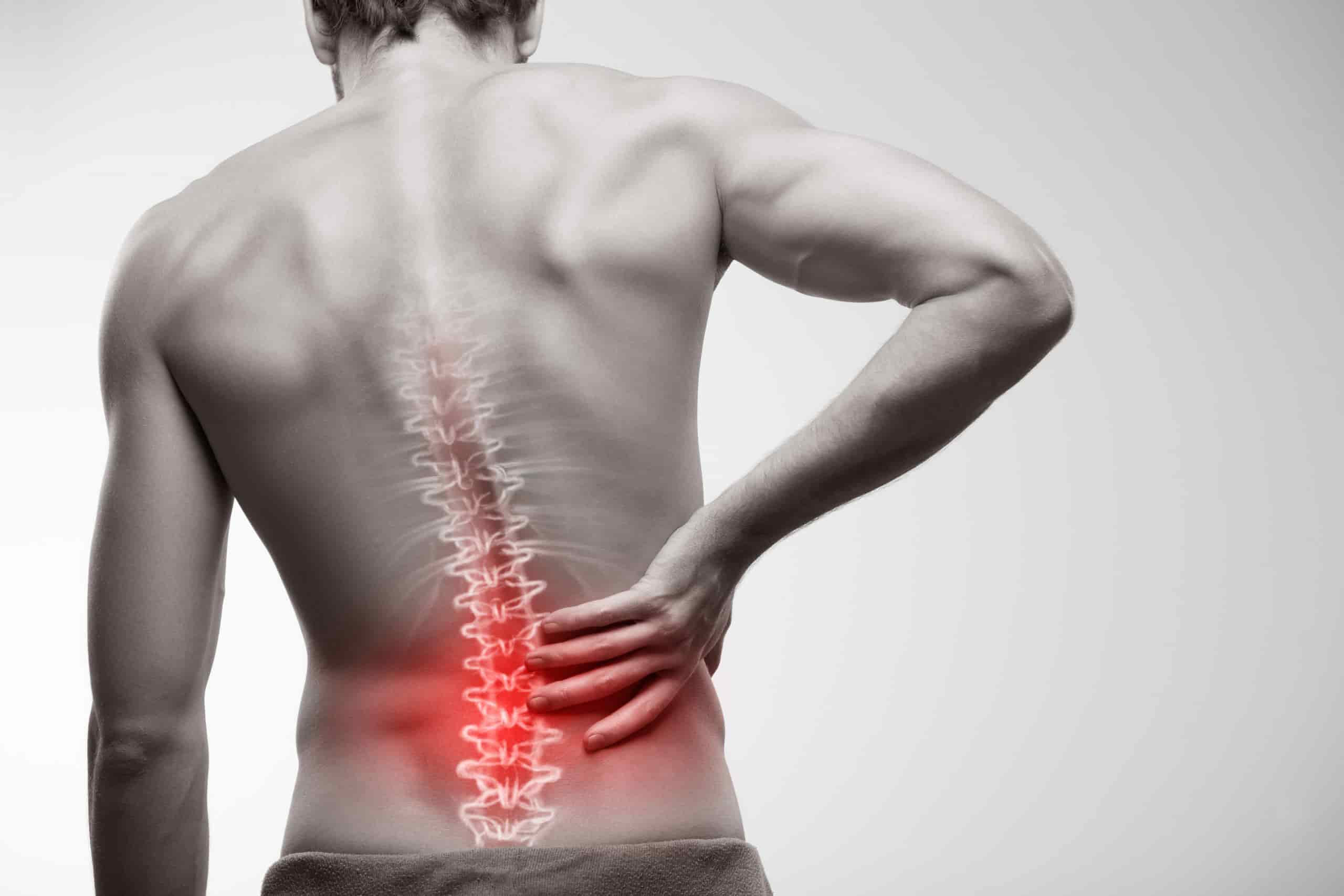
WHY WEAK GLUTES ARE A PROBLEM?
The role of Glutes is to stabilize the hip when you land, propelling forward as you walk, pushing forward as you climb stairs, and most importantly for holding your pelvis upright when you stand.
Weakened or inactive Glutes will not be able to hold your pelvis in the right position or help maintain the correct alignment of your femur. If glutes muscles are not working on the daily activities it can cause the wrong muscle groups to be “switched on”. The surrounding muscles may become over-activated to help compensate for the lack of strength in the Glutes. The brain sends a signal to the surrounding muscles when the Glutes cannot activate sufficiently. These muscles cause a change in our walking pattern which can lead to increased stress and damage to our joints.
The pain, muscle spasm, and nerve pain are caused by the over activation and compensation. This is not only related to the lower back pain but also ITB syndrome and patella-femoral pain (knee pain).
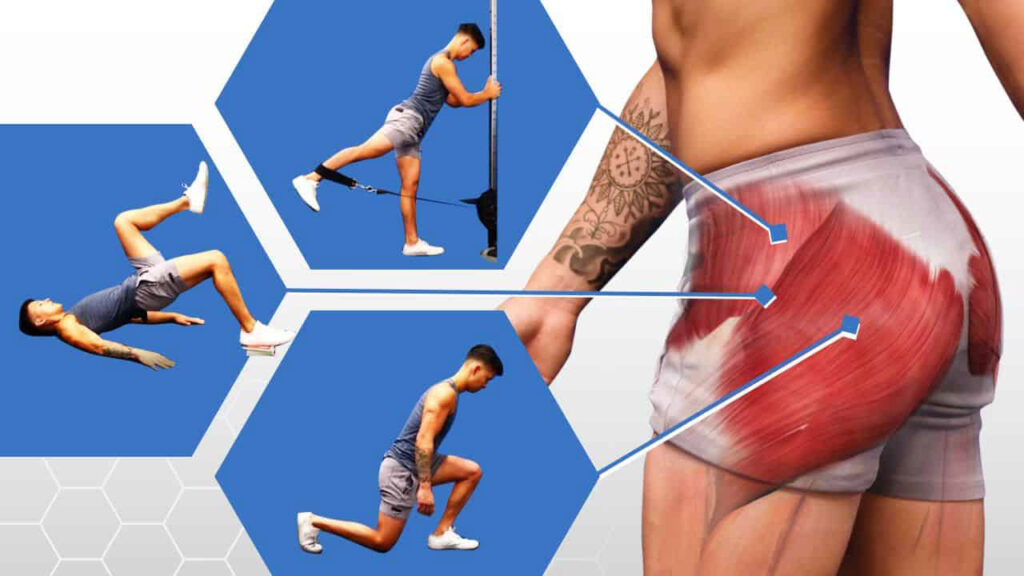
WHAT ARE GLUTES MUSCLES?
Our glutes or the bottom muscles are made up of three different muscles: gluteus maximus, medius, and minimus. The gluteus maximus is the largest of the three, with medius and minimus being much smaller. All three muscles play a vital role in your daily movement, posture, and position of your lower back and pelvis.
The role of the glutes muscles in our daily movement involves:
- Gluteus Maximus: This is the largest and most superficial of the three. This muscle is responsible for hip extension with some external rotation.
- Gluteus Medius: This muscle is located above but deeper than the glute max. The main job of this muscle is to abduct the hip, which means it pulls the leg away from your body out to your side.
- Gluteus Minimus: The job of this muscle is similar to the gluteus medius, and is located just underneath it. Both the glute min and glute med provide stabilization for the hips.
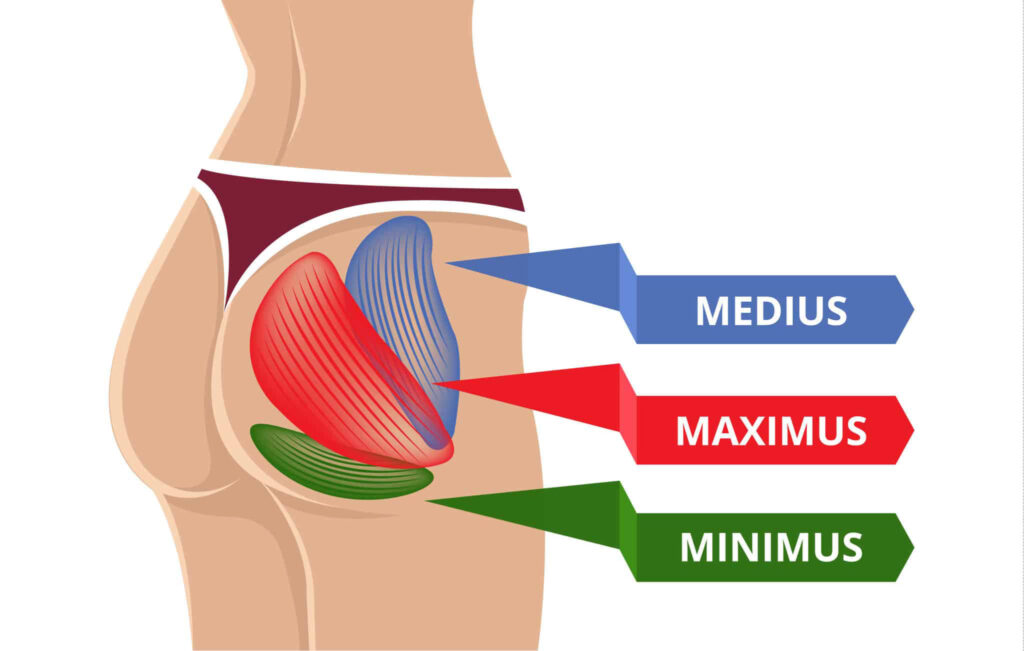
HOW DOES GLUTES MUSCLE CAUSE BACK PAIN?
The tightened and weak glutes can cause lower back discomfort. The pain and tightness in the back are usually caused by overtraining these muscles or working in occupations that require prolonged sitting. The pain can be triggered by over-burdening the surrounding muscles as the glutes are not able to function properly. These include:
The piriformis muscle: This muscle is found in the buttock area that connects to the sacrum, the lowest part of the spine. The main role of this muscle is to assist with lateral movement of the thigh and stabilize the lower spine.
- An overactive piriformis muscle compensating for underactive gluteal muscles leads to a common dysfunctional movement pattern causing the pain in lower back pain. This not only can lead to pain in the lower back area, but underactive gluteal muscles can result in other tissues in the pelvis and lower back absorbing various forces during daily activities, such as walking.
The hip flexors: These are the muscles above the pelvis that can cause pain in the lumbar area. These muscles sit laterally to the spine and the muscles of the lumbar spine. Nowadays we have a sedentary lifestyle more than ever, and the hip flexors are forced to always be in a shortened position, leading to neural inactivity, tightness, and weakness.
- The impaired physiological state of the hip flexors muscles leads to many adverse effects. The lower spine can become unstable as the muscles of the lower back area are heavily recruited to support movement resulting in fatigue.
- Inactivity of the nerves also spreads to other major weight-bearing muscles such as the glutes. This would force the body to rely on the lower back muscles to support body weight with movement.
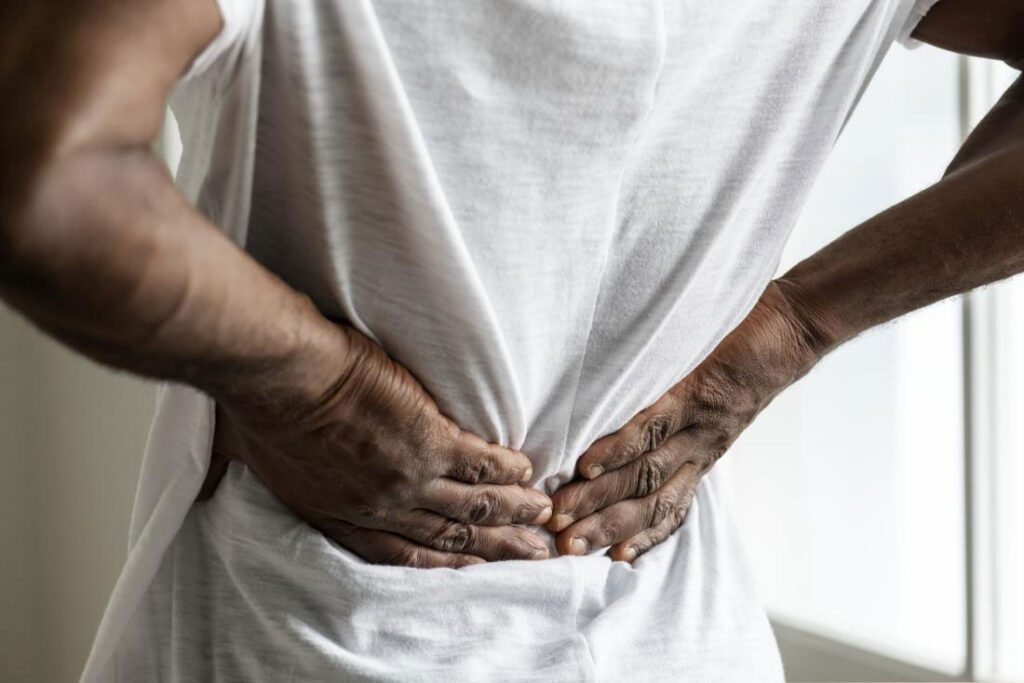
WHAT IS THE SIGN OF WEAKEN GLUTES MUSCLES?
Weakened and underactive glutes can throw off your posture, balance, and possibly affect your athletic performance. An easy way to test the strength of your gluteal muscles is doing a single-leg squat and going as low as you can. If you can perform knee flexion to 90 degrees it indicates you have strong gluteal muscles.
Some of the signs of weakened glutes muscles include:
- Knee or hip pain
- Poor Posture
- Abnormal gait
- Plantar Fasciitis
- Foot Blisters
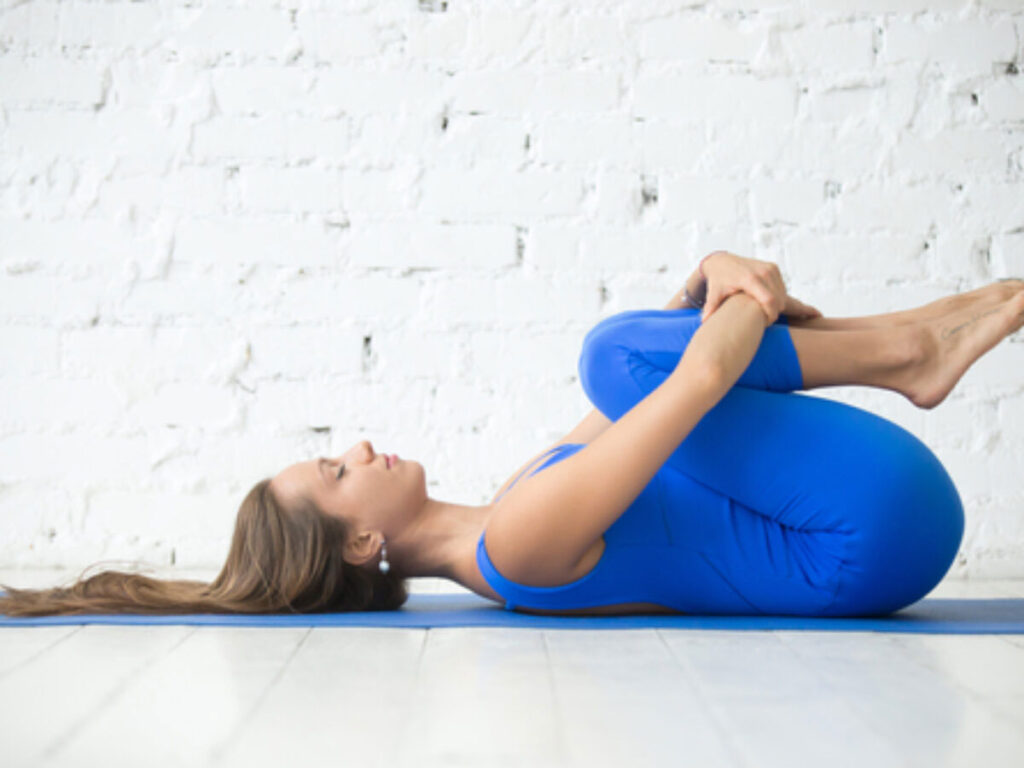
HOW TO STRENGTHEN GLUTE MUSCLES TO REDUCE LOWER BACK PAIN?
It is important to support the lower back area when it comes to addressing lower back pain through rehabilitation both by lengthened and strengthened muscles. Sometimes, you may opt to either excessively stretch or excessively strengthen your muscles, which can create further problems.
When we are activating and strengthening the gluteus maximus, gluteus medius, and gluteus minimus muscles we take part of the load off our back and provide a more balanced pelvis. This is important to engage these muscles to prevent lower back pain, knee pain, and specifically gluteus medius pain.
Stretching and strengthening your gluteus muscles and incorporating more movement into your daily routine helps in reducing the pressure on the surrounding muscles. This will also help increase your performance and prevent other injuries.
- Strengthening Exercise: This helps to alleviate your gluteus medius pain and intern your back pain and possible knee pain. Common strengthening exercise includes:
- Stretching Exercise: This is an important way to have the gluteus medius activated for more strengthening. This would thus eliminate your gluteus medius pain and ultimately your back pain.
With the right exercises under the guidance of the expert will only take about 6 to 8 weeks to build and strengthen your glutes. But, you will notice a significant improvement in the level of low back pain in just a couple of weeks.
OUTLOOK
Low back pain impacts millions of people around the world irrespective of age. It is important to know the reason behind the pain for timely treatment. Everyone needs strong glutes to avoid lower back pain as well as pain in surrounding muscles. With every movement you make (sitting on the toilet, walking, swinging a golf club), your glutes work to stabilize your hips and lower back.
People Also Read:
If you or anyone you know is suffering from back pain, our expert providers at Specialty Care Clinics will take care of your health and help you recover.
Call us on (469) 545-9983 to book an appointment with our specialists.
